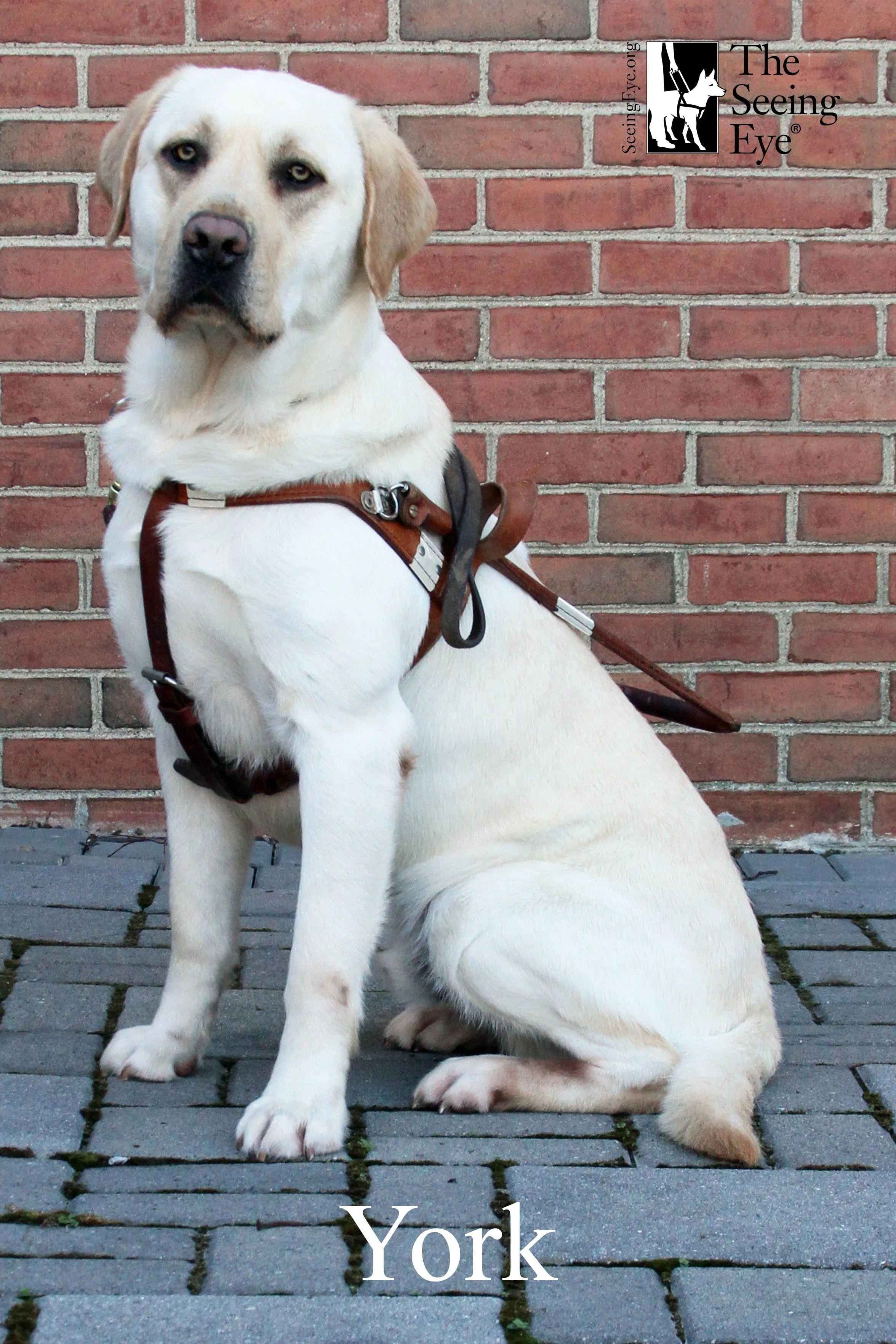From Dog Food to the Dog
York’s official picture from Seeing Eye. York is a yellow Labrador retriever.
AVENUE UPDATE #2
In the last edition of “Avenue Update,” I equated my work in the accessible transit and paratransit industry to the tech-sector phrase: “eating one’s own dog food.” I’m convinced that it has helped me to better understand how people with disabilities who depend on the transportation and mobility services transit agencies, municipal governments and our providers and suppliers feel, and I’m grateful for having this close personal proximity to my work. It has definitely shaped our approach at Accessible Avenue.
York is a guide dog trained at The Seeing Eye in Morristown, NJ, and although he’s not my first guide dog, he’s the one that guides me these days. York is a four-year-old, eighty-pound male Yellow Labrador Retriever who loves life, people, places, rough and tumble play, sprinklers when I’m not paying close enough attention as we navigate the streets and sidewalks of Phoenix on a warm summer day, and yes, dog food. As a guide dog, York can legally go just about anywhere I do—stores, restaurants, hotels, on public transit, in taxicabs and rideshare vehicles, on airplanes, to movie theaters—York loves dropped popcorn and even to conferences—he’s been to several. He is learning the finer points of navigating large crowds and exhibit halls. He’s even been to an NBA basketball game which I probably enjoyed more than he did.
Guide dogs represent an example of service animals covered by the Americans with Disabilities Act (ADA) and by additional laws in all fifty U.S. states, and by other access laws in place across Canada. In general, any person with a disability may be accompanied by an appropriately trained service animal in all places of public accommodation as long as the animal is under the physical or verbal control of its handler and as long as the animal does not threaten the health or safety of others. Here in the United States, those who own, manage or work in places of public accommodation are permitted to take several actions to ensure that animals who accompany guests to their establishments are service animals, including the following:
Asking whether the animal is a service animal and if so, what services the animal is trained to perform.
Barring any animal (even a service animal) who acts in a disruptive, aggressive, or threatening way or whose behavior is not appropriately managed by its handler.
Seeking reimbursement for physical damage caused by a service animal.
What to Do When You Encounter a Service Animal
Most service animals (including York) are cute and cuddly, and many people really want to give them a quick pat on the head or scratch behind the ears. … Resist the urge!
Service animals are working, and your well-meaning attention can cause distraction and put the handler’s safety at risk. If you know the handler, wait for a quiet moment when the handler is not working with their animal. This will be a better time for a conversation about their service animal.
Want More Information?
At Accessible Avenue, we strongly support the right of people with disabilities to travel with their appropriately trained and behaved service animals. We also believe in the right of public agencies, private businesses, and other public-facing organizations to protect the health and safety of all guests, including those with legitimate service animals.
Accessible Avenue believes that protecting the rights of customers and operators of public-facing agencies and businesses begins with clear, well-crafted policies and procedures. We have developed a framework for creating service animal policies that inform customers of their rights and responsibilities while educating managers and staff on how best to legally protect the rights of service animal handlers and the health and safety of everyone.
For more information, check out our Service Animal Policy or schedule a free consultation where we can discuss your specific questions and concerns and craft a service animal policy that is just right for you and your customers.
#AmericansWithDisabilitiesAct
#PeopleWithDisabilities
#GuideDog
#ServiceAnimal

